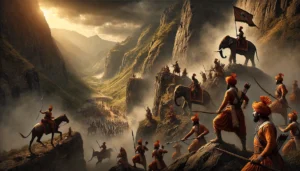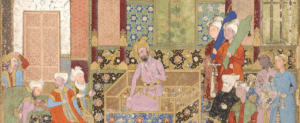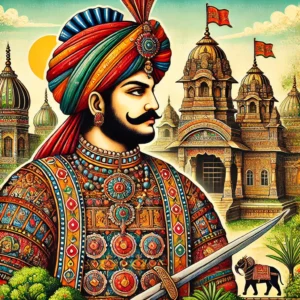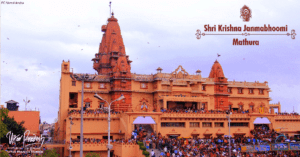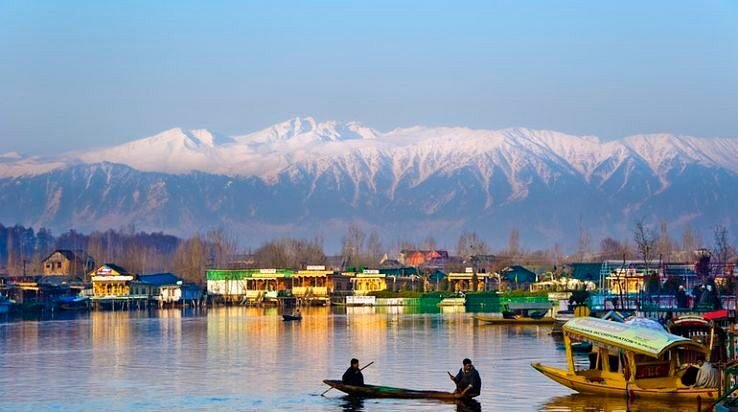
Kashmir, often referred to as the “paradise on Earth,” holds a significant place in indian civilizational history due to its rich cultural, religious, and political legacy. It has been a hub for ancient civilizations, the birthplace of profound Hindu and Buddhist philosophical thought, and home to a vibrant artistic heritage. However, it has also witnessed significant periods of political turmoil and foreign invasions that shaped its historical trajectory. This article will trace the history of Kashmir from its mythological and early beginnings through the rise and fall of its Hindu and Buddhist dynasties, culminating in the Islamic invasions that marked the end of this era.
I. Ancient Origins of Kashmir
Beginnings: The Creation of Kashmir:
The story of Kashmir begins in ancient Hindu mythology. According to the Nilamata Purana, a 6th-century Sanskrit text that provides a semi-mythical history of Kashmir, the valley was once a vast lake called Satisar. The water body was said to be inhabited by the demon Jalodbhava, who terrorized the people of the surrounding regions. The sage Kashyapa, after meditating and performing austerities, drained the lake by striking the mountains with his trident. This act created the Kashmir Valley, making it suitable for human habitation. It is from this story that the region supposedly derives its name: “Kashmir” is said to come from Kashyapa-Mir (the land of Kashyapa).
This mythological creation story also serves as a reflection of how early inhabitants viewed their world, merging nature with divine intervention. These tales formed the basis for the sacred geography of Kashmir, which would influence the development of Hinduism and other religious traditions in the valley.
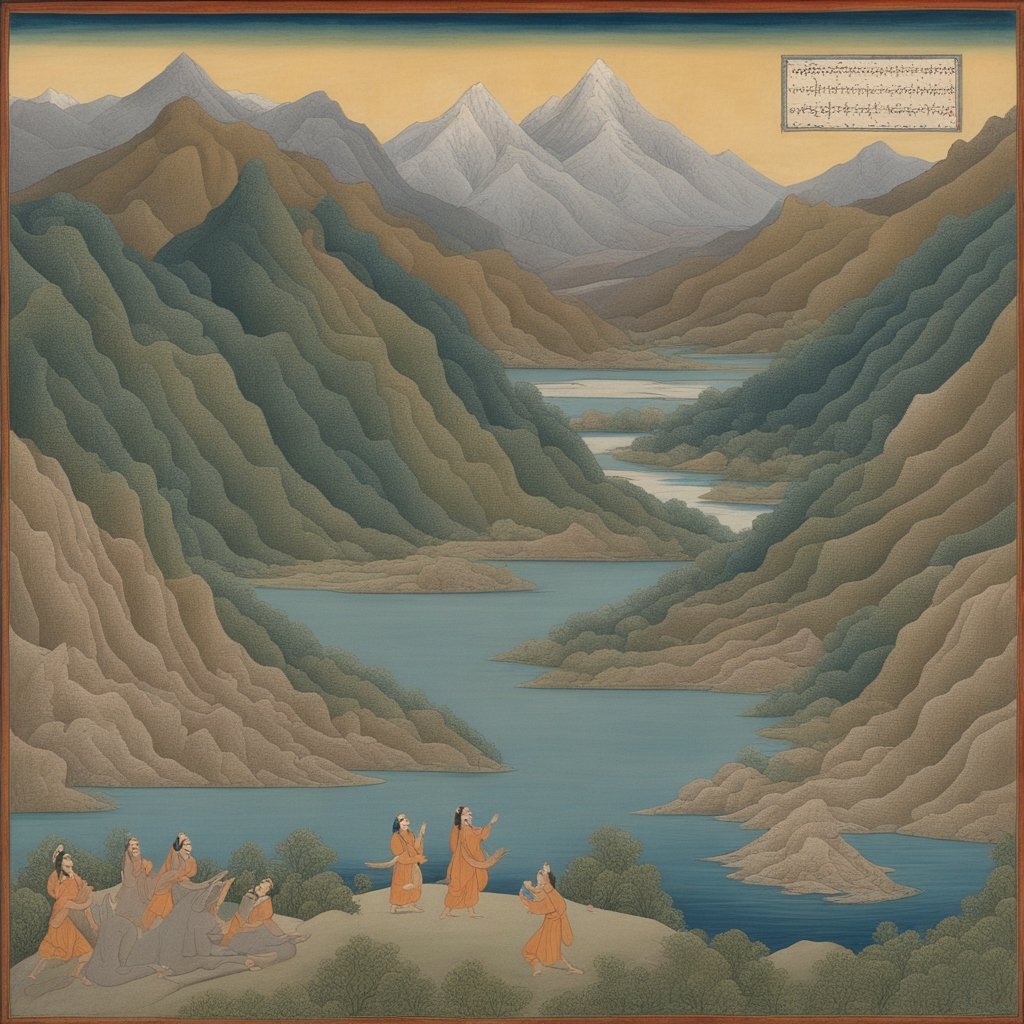
Prehistoric Kashmir and the Neolithic Period
Kashmir’s human history stretches back to the Neolithic period (around 3000 BCE), with archaeological evidence of early settlements in places like Burzahom, near Srinagar. The inhabitants of Burzahom lived in distinctive pit dwellings, engaged in agriculture, and domesticated animals, marking the region’s early transition from a nomadic lifestyle to a more settled, agricultural society. The people of this era practiced ritual burials, often with animals, indicating the presence of spiritual and religious customs that would evolve in later centuries.
Vedic Period and the Growth of Early Hinduism
The Vedic period (c. 1500 BCE – 500 BCE) brought profound cultural changes to Kashmir, aligning it with the broader religious and philosophical developments taking place across northern India. The Kashmiri Pandits, the region’s Hindu Brahmin community, trace their origins to this period. The introduction of Sanskrit and the Vedic hymns laid the foundation for early Shaivism and Vaishnavism—the worship of Shiva and Vishnu, respectively—that would later flourish in the valley.
Kashmir is mentioned in ancient Hindu epics such as the Mahabharata, where it is referred to as Kashyapapura. This early association with the broader Vedic world established Kashmir as a place of learning and religious importance in Hindu cosmology.
The Naga People and Early Tribal Societies
During these early periods, Kashmir was also home to indigenous tribes, most notably the Nagas, a serpent-worshipping people mentioned frequently in Hindu mythology and Kashmiri legends. The Nagas played a significant role in the religious life of early Kashmir, and many ancient Kashmiri temples were dedicated to Naga deities. The naga culture was eventually assimilated into mainstream Hinduism, with many Naga gods being identified with the god Shiva, who in later periods became the preeminent deity in Kashmir.
II. The Spread of Buddhism in Kashmir (3rd Century BCE – 4th Century CE)
The Introduction of Buddhism under Mauryan Rule & Emperor Ashoka (c. 3rd Century BCE)
The introduction of Buddhism to Kashmir occurred during the reign of Emperor Ashoka (304–232 BCE), the Mauryan ruler known for his efforts to spread the teachings of Buddha throughout his empire. Ashoka played a crucial role in transforming Kashmir into a center of Buddhist learning and spirituality. He is credited with building several stupas and viharas (Buddhist monasteries) in the valley and establishing Srinagar, which would later become Kashmir’s capital.
Ashoka’s patronage ensured that Buddhism flourished in Kashmir for several centuries, making the region a focal point for Buddhist scholarship, especially the Sarvastivada school. Monks and scholars from Kashmir would play pivotal roles in spreading Buddhist teachings throughout Central Asia, China, and Tibet.
The Kushan Empire: Kashmir as a Center of Buddhist Learning (1st–3rd Century CE)
Kashmir reached its zenith as a Buddhist center during the reign of the Kushan Empire, which controlled much of northern India and Central Asia from the 1st to the 3rd centuries CE. Kanishka, the greatest of the Kushan emperors, convened the Fourth Buddhist Council in Kundalavana , Kashmir in 72 CE. This council marked a critical moment in the development of Mahayana Buddhism and solidified Kashmir’s role as a central hub of Buddhist thought.
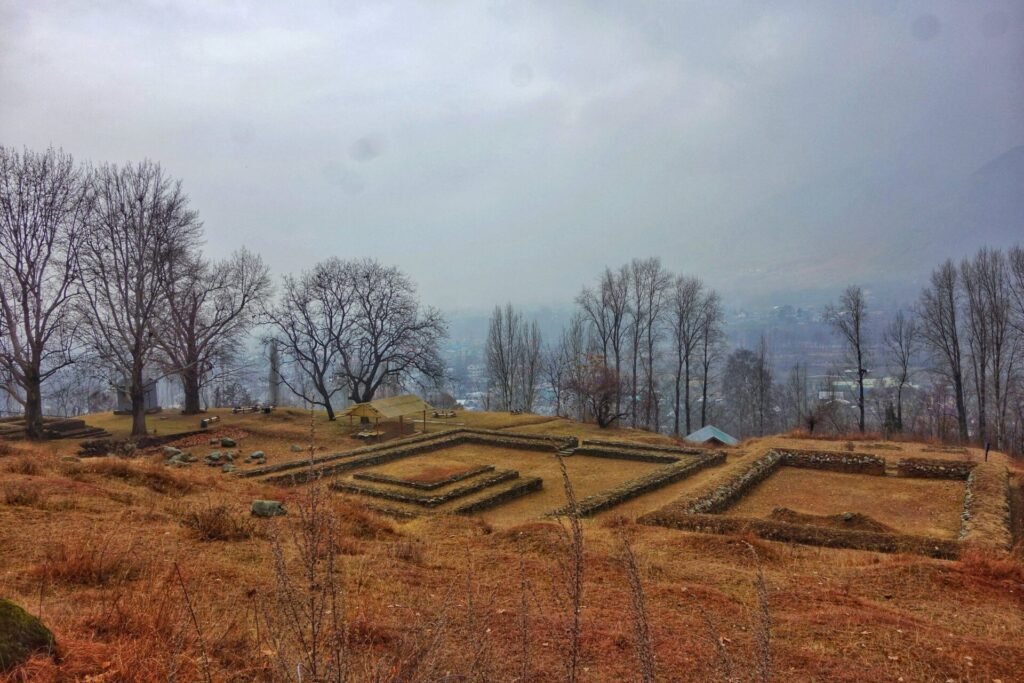
During this period, Kashmiri scholars such as Nagarjuna, a key figure in the development of the Madhyamaka school, and Vasubandhu, who contributed to Yogachara philosophy, became renowned across the Buddhist world. The influence of these scholars extended well beyond the valley, helping to shape the intellectual foundations of Buddhism in China, Tibet, and other parts of Asia.
Buddhist Art and Architecture in Kashmir
The period of Buddhist dominance in Kashmir also gave rise to a flourishing of Buddhist art and architecture. The Harwan Buddhist site, with its distinctive terracotta tiles and intricate carvings, showcases the region’s artistic achievements. Sculptures of the Buddha, adorned with elaborate robes, display a synthesis of Gandharan, Indian, and local artistic influences.
Kashmiri Buddhists constructed stupas, monasteries, and temples, creating a rich architectural heritage that blended Hellenistic, Indian, and Central Asian styles. Many of these artistic traditions continued to influence Kashmiri art even after the decline of Buddhism.
The Coexistence of Buddhism and Hinduism
Despite the spread of Buddhism, Hinduism continued to thrive in Kashmir. The two religions coexisted relatively peacefully, often influencing each other’s philosophical and artistic traditions. Kashmir became known for its pluralistic culture, where followers of different religious traditions engaged in intellectual debates and contributed to the region’s rich cultural tapestry.
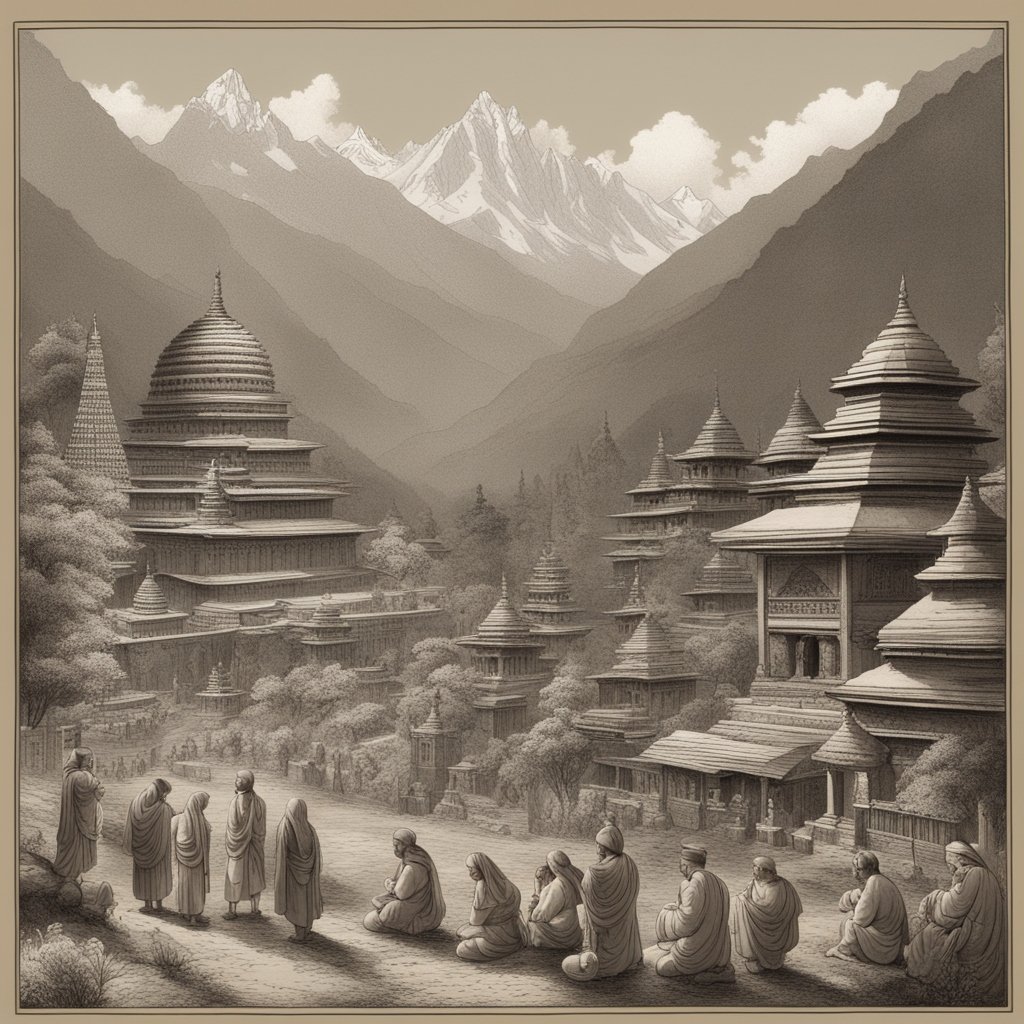
During this period, the practice of Shaivism (the worship of Shiva) gained prominence in Kashmir, laying the groundwork for the development of Kashmir Shaivism in later centuries. Vaishnavism (worship of Vishnu) also had a significant following, with temples dedicated to both Shiva and Vishnu being built across the region.
Decline of Buddhism in Kashmir
By the 4th century CE, the prominence of Buddhism in Kashmir began to wane due to a resurgence of Hinduism and internal doctrinal disputes. While Buddhism never disappeared entirely, it became increasingly marginalized as Hindu dynasties began to reassert their control over the region, leading to a gradual decline in Buddhist institutions and practices.
III. The Rise of Kashmir Shaivism and the Hindu Kingdoms
The Gupta Empire and Hindu Revival (4th–6th Centuries CE)
The decline of the Kushan Empire around the 3rd century CE paved the way for the rise of regional powers in northern India, and Kashmir was no exception. The arrival of the Gupta Empire (320–550 CE) marked a period of Hindu revival across much of India. While the Gupta emperors did not directly control Kashmir, their cultural and religious influence extended to the region.
During this period, Hinduism in Kashmir underwent significant development, particularly in the form of Kashmir Shaivism, a non-dualistic philosophical system that would become one of the region’s most defining intellectual traditions. Kashmir Shaivism, also known as Trika Shaivism, posits that the entire universe is a manifestation of Shiva, and that through meditation and spiritual practices, individuals can attain liberation (moksha).
The Early Hindu Kings of Kashmir
The history of the early Hindu kings of Kashmir is chronicled in the Rajatarangini, a 12th-century text written by the Kashmiri historian Kalhana. The Rajatarangini provides a semi-historical account of the region’s rulers, tracing their lineage back to mythical times.
One of the earliest known rulers of Kashmir was Gonanda I, a semi-legendary king mentioned in the Rajatarangini. However, historical records become more reliable starting from the reign of Sri Pravarasena also sometimes Pravarasena II (6th century CE), who is credited with the construction of Pravarapura, the city that later became known as Srinagar. Under his rule and those of his successors, Hinduism, particularly Shaivism, flourished in Kashmir.
The Karkota Dynasty (625–855 CE)
The Karkota dynasty represents a significant period in the history of Kashmir, marking the region’s transition from Buddhist rule to a flourishing Hindu kingdom. The dynasty was founded by Durlabhavardhana in the early 7th century, but it was under the reign of his successors, particularly Lalitaditya Muktapida (r. 724–760 CE), that the Karkotas reached the height of their power.
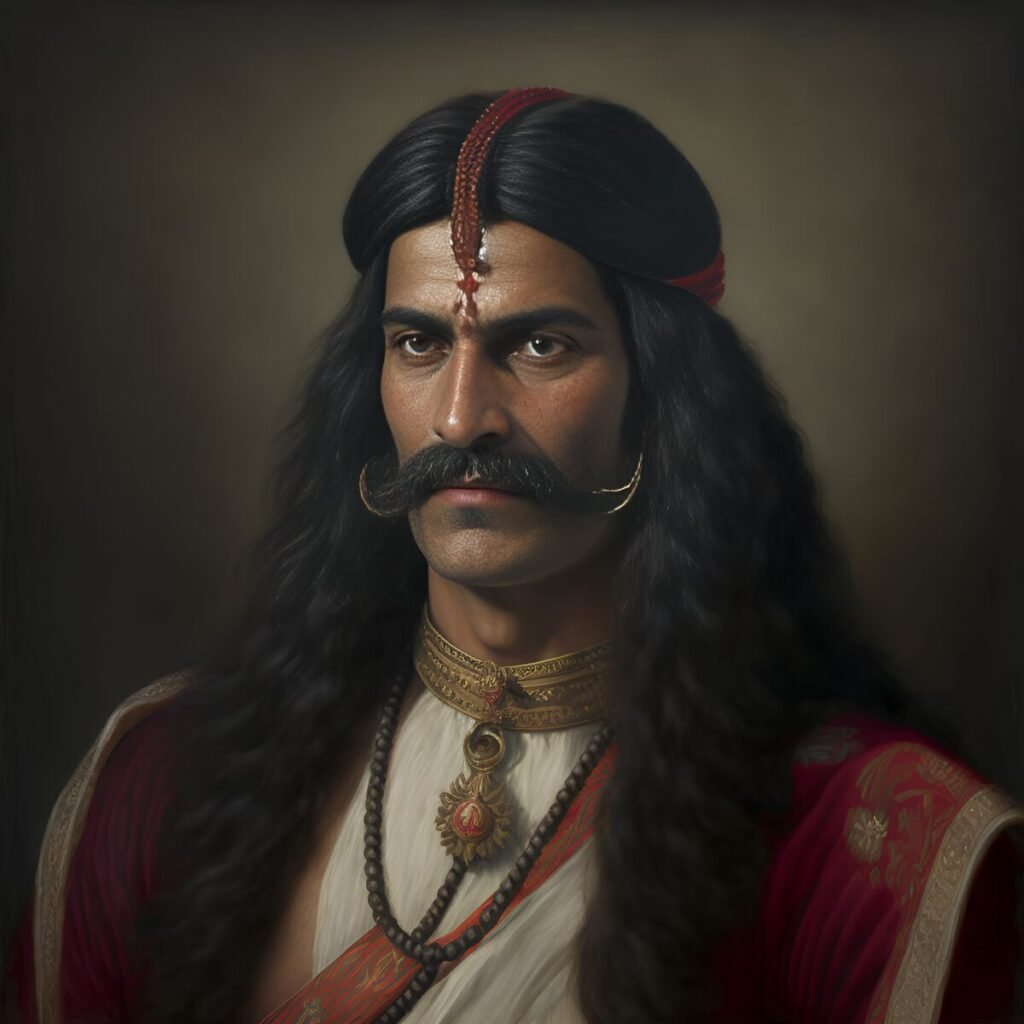
Lalitaditya is remembered as a powerful and ambitious ruler who expanded Kashmir’s influence beyond its borders, waging successful military campaigns in Central Asia, Tibet, and Northern India. He established Kashmir as a dominant regional power, and his reign is considered one of the most prosperous periods in Kashmir’s history.
Lalitaditya was also a great patron of Hinduism and the arts. Under his reign, numerous temples were constructed, the most notable of which is the Martand Sun Temple, dedicated to the Sun god Surya. The temple, built near Anantnag, is a remarkable example of Kashmiri architecture, showcasing a blend of Gandharan, Gupta, and local styles. The Karkotas also allowed religious pluralism, as Buddhism continued to exist alongside the rising dominance of Shaivism and Vaishnavism.
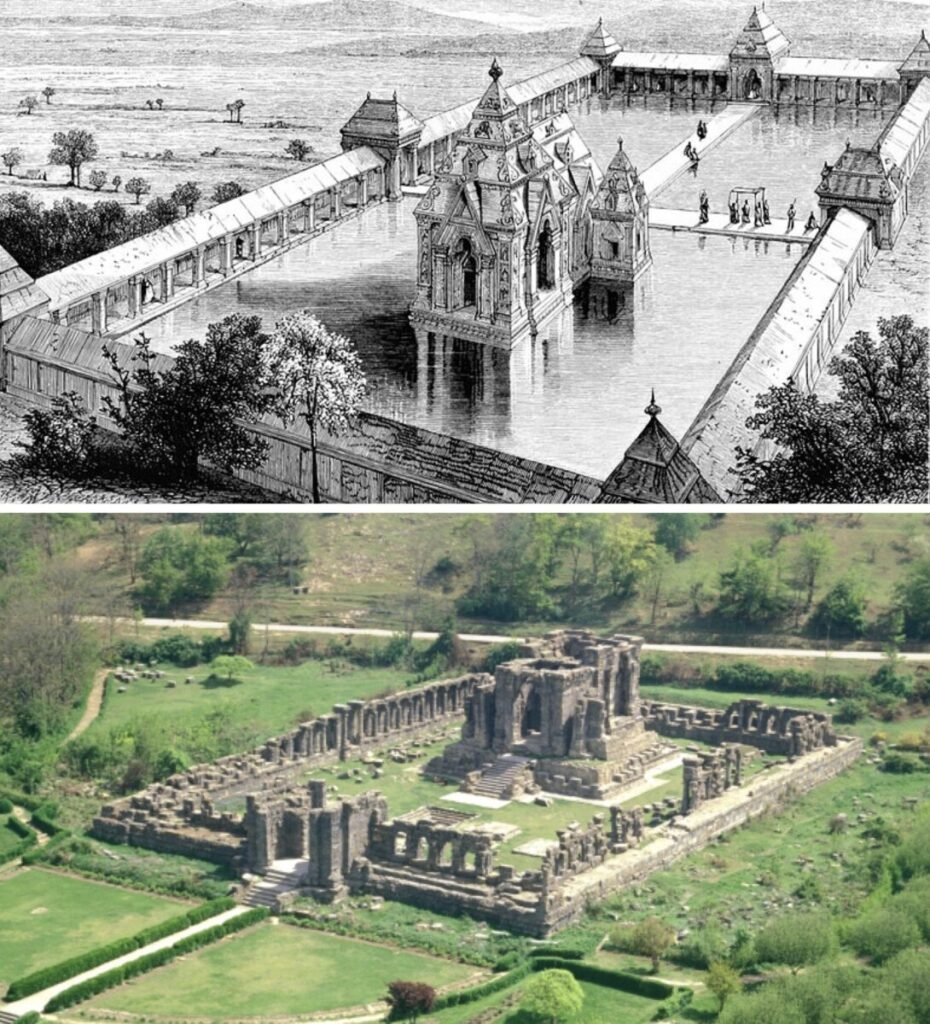
The Utpala Dynasty (855–1003 CE)
Following the fall of the Karkota dynasty, the Utpala dynasty came to power in 855 CE. The first ruler, Avanti Varman, is remembered for his administrative reforms and improvements in agriculture, particularly the development of irrigation systems that helped to stabilize the economy. Avanti Varman was also a devout Hindu and built several temples, including the Avantisvamin Temple, dedicated to Lord Vishnu.
The Utpala dynasty oversaw a period of relative stability and economic prosperity, but they were plagued by internal power struggles and succession disputes. By the end of the 10th century, their control over Kashmir had weakened, leaving the region vulnerable to external threats.
The Lohara Dynasty (1003–1101 CE)
The Lohara dynasty, founded by Sangramaraja, marked the final era of Hindu rule in Kashmir. Though Sangramaraja restored some stability to the kingdom, the dynasty struggled with internal strife and external invasions. One of the most notable rulers of this period was Queen Didda, a powerful and influential queen who played a central role in stabilizing the kingdom during the late 10th century. Despite her efforts, the Lohara dynasty could not stave off the decline of Hindu rule in Kashmir.
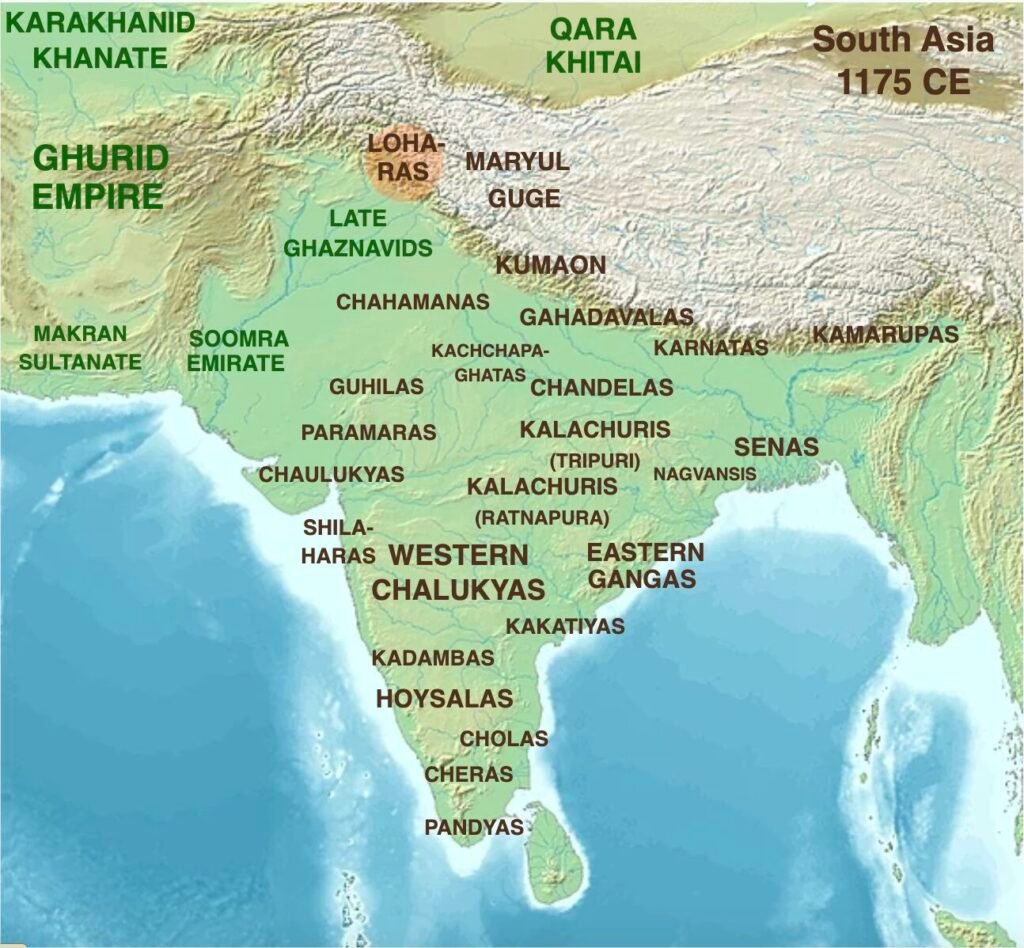
The Lohara kings were staunch patrons of Shaivism. During this period, Kashmir Shaivism reached its intellectual peak, producing some of the most important works of Hindu philosophy. The scholar Abhinavagupta, one of India’s greatest philosophers, produced his seminal works on Shaivism, aesthetics, and Tantric philosophy during this time.

The Flourishing of Kashmir Shaivism
By the 9th century, Kashmir Shaivism had reached its zenith, producing some of the most important philosophical texts and thinkers in Indian history. Founded by the sage Vasugupta (author of Shiva Sutras, a foundational text of Kashmir Shaivism), Kashmir Shaivism is a non-dualistic school of thought that teaches that the entire universe is a manifestation of Shiva and that the individual soul (atman) is one with the universal consciousness. This profound philosophical tradition greatly influenced Indian spiritual and intellectual thought.
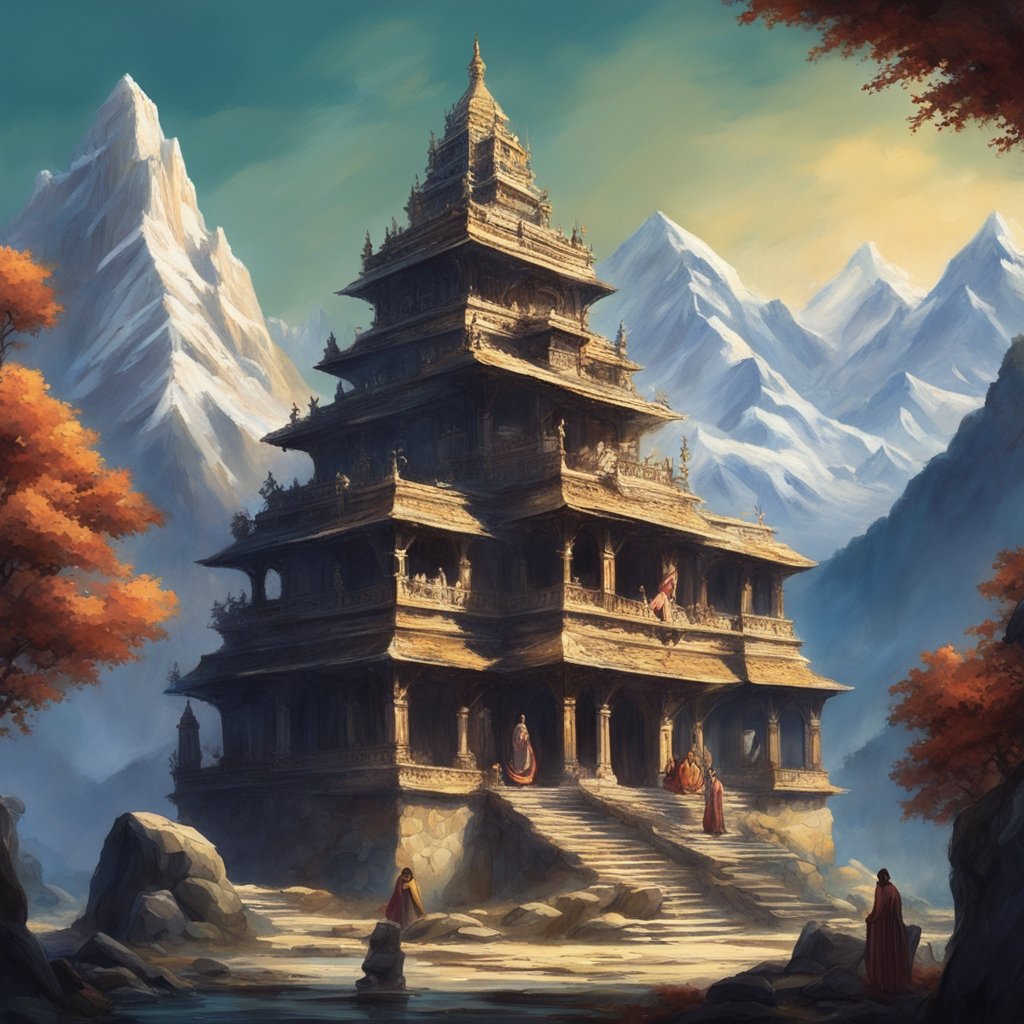
The 10th-century philosopher Abhinavagupta is considered one of the most important figures in the history of Indian metaphysics. His magnum opus, the Tantraloka, is a comprehensive exposition of Shaiva philosophy and Tantric practices. He also made significant contributions to Indian aesthetics and theater (Natyashastra), particularly the Rasa theory, which explores the emotional and aesthetic experience of art.
The intellectual achievements of Kashmir Shaivism made the region one of the leading centers of Hindu thought, drawing scholars and students from across India. Kashmir Shaivism combined deep philosophical inquiry with spiritual practice, emphasizing meditation, self-realization, and Tantric rituals. The intellectual vibrancy of this tradition made Kashmir one of the leading centers of Hindu thought in the medieval period; and many monasteries and temples dedicated to Shiva were established throughout Kashmir.
IV. The Decline of Hindu Rule and the Rise of Islamic Dynasties
The Decline of Hindu Rule
By the late 11th century, Kashmir’s political landscape had become increasingly unstable, and the Lohara dynasty, despite its best efforts, struggled to maintain the kingdom’s internal coherence. Dynastic infighting, administrative decline, and external invasions all contributed to the weakening of Kashmir’s Hindu rulers. Meanwhile, the flourishing intellectual and religious life—particularly the prominence of Kashmir Shaivism—persisted in the valley, but this golden age of Hindu and Buddhist traditions was coming to an end.
As royal patronage for temples and religious institutions waned, the groundwork was laid for the eventual demise of Hindu and Buddhist dominance in Kashmir. This period of political vulnerability opened the doors to foreign invasions and the arrival of new religious forces that would drastically alter the course of Kashmiri history.
The Brutal Rise of Islamic Rule in Kashmir (Late 13th Century)
The spread of Islam in Kashmir began in earnest during the late 13th and early 14th centuries, not through peaceful conversion but through brutal invasions, massacres, and forced conversions. Initially, Sufi missionaries from Central Asia and Persia arrived in Kashmir, promoting Islam. However, it was with the rise of Shah Mir in 1339—who established the Shah Mir dynasty—that Islamic rule was formally established in the region, replacing the longstanding Hindu and Buddhist kingdoms.
While early Sufi missionaries like Mir Sayyid Ali Hamadani preached a more spiritual and syncretic form of Islam, the political establishment of Islam was marked by violence. The Islamic conquest of Kashmir was not peaceful. The valley, which had been predominantly Hindu and Buddhist for centuries, witnessed mass persecution, the destruction of temples, and the imposition of Islamic law.
The reign of Sikandar Butshikan (1389–1413), a later Islamic ruler from the Shah Mir dynasty, is particularly notorious for his brutal efforts to Islamize the region. Sikandar earned the moniker “Butshikan” (meaning “iconoclast” or “destroyer of idols”) due to his policy of systematically destroying Hindu temples, statues, and religious symbols. It is widely documented that thousands of Hindu temples were razed, and mass conversions were forced upon the local population. Those who refused to convert faced severe punishments, including death, and many Hindus were either killed or driven out of the valley.
Sikandar Butshikan’s policies included:
- Destruction of Hindu and Buddhist temples: Iconic structures, which had stood for centuries, were destroyed, erasing centuries of architectural and religious heritage.
- Forced conversions: Many Kashmiri Hindus and Buddhists were forcibly converted to Islam under threat of violence or death.
- Exile and massacre of Hindus: Those who resisted conversion were either massacred or driven out of their homes. This period is considered one of the most violent and destructive phases in Kashmiri history.
The demographic and cultural transformation of Kashmir during this period was profound. A society that had been deeply rooted in Hinduism and Buddhism, known for its religious tolerance and intellectual traditions, was rapidly Islamized through violent means. This resulted in the mass exodus of Kashmiri Pandits, the Hindu Brahmin community, many of whom fled to other parts of India to escape persecution.
The forced Islamization policies set a precedent for the Shah Mir dynasty and later rulers in Kashmir, ensuring that Islam would remain the dominant religion in the region. The once-flourishing Hindu and Buddhist cultures were relegated to a minority status, their temples and cultural sites reduced to ruins, and their religious practices suppressed. The brutality of the early Islamic rulers left an indelible mark on Kashmir’s religious and social fabric, altering the trajectory of its history forever.
The Lost Legacy
The history of Kashmir, from its mythological origins to the decline of Hindu rule, is a story of cultural richness, religious diversity, and intellectual achievement. The region evolved from its early Neolithic inhabitants to become a thriving center of Hindu and Buddhist thought, art, and architecture. The dynasties that ruled Kashmir, particularly the Karkotas, Utpalas, and Loharas, oversaw periods of great prosperity and cultural flourishing, leaving behind a legacy of temples, sculptures, and philosophical traditions.
However, by the 13th century, Kashmir began to experience the transformative influence of Islamic invaders and missionaries, marking the end of its Hindu-Buddhist era. The arrival of Islam introduced new religious and cultural dynamics to the region, forever changing the course of Kashmir’s history.

